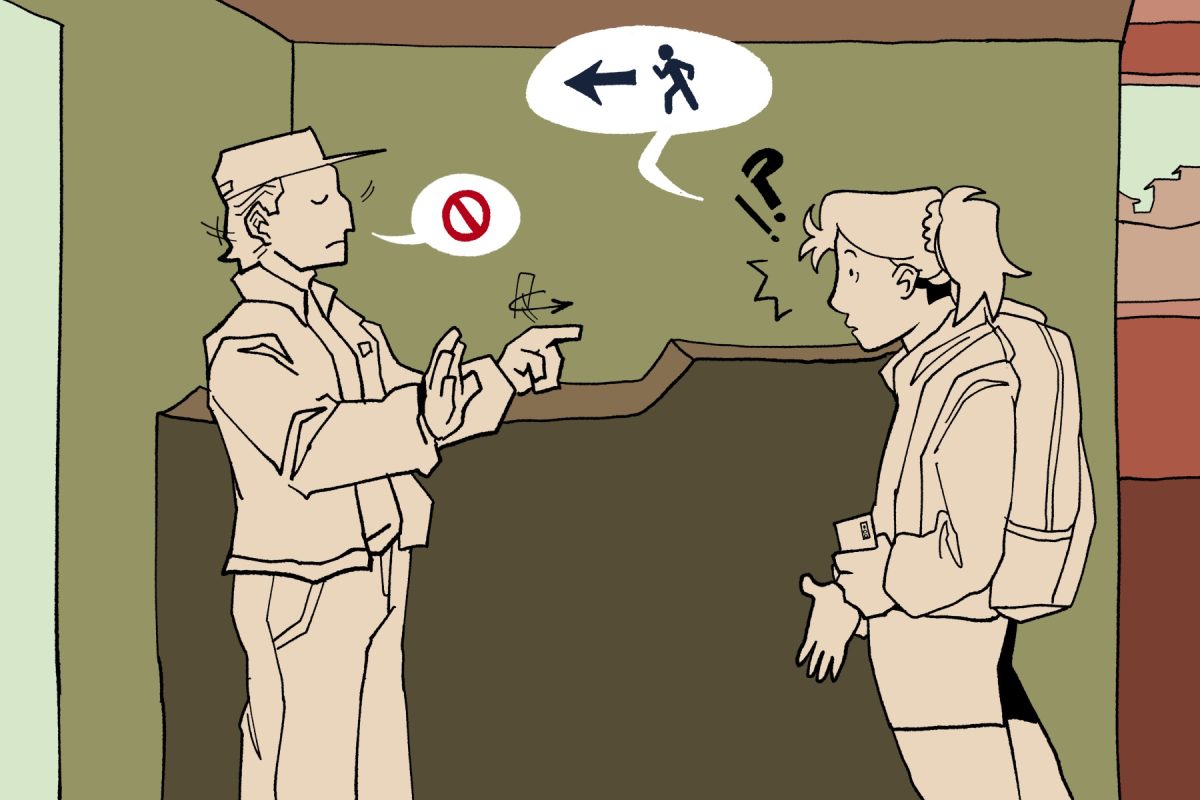In previous years, students who met requirements were allowed to leave the classroom and even school property during the period on designated blending days. However, it has now been limited to strictly on-campus learning, and that’s too bad. Students should be able to blend and leave campus.
This change has sparked differing opinions, and some students feel as though the new rule takes away part of their independence and their control over their daily schedule. With the exception of those who have off-campus lunch privileges, students no longer have the option to leave the premises during free periods.
Seating areas are provided throughout the building for students who are able to blend. The reformations to the rules about blending also include taking a short certification course to ensure students understand the expectations that come with taking flexible classes.
The experimental approach to this year’s rule on blending stems from the many behavioral problems that arose due to last year’s freedoms. Issues in attendance and cutting class skyrocketed the past couple school years.
“Kids were abusing it,” Upper Campus Principal Dr. Jeff Prickett said. “If they were not doing well in classes, they would just leave for half the day, and who could stop them? Even kids who were not supposed to be out for blended.”
A lot of students feel it is unfair to revoke being able to go off-campus during their flexible periods if they meet blending requirements. But, administrators recognize that the liberties granted to blended classes have been taken advantage of in the past and are trying to diminish what they believe is the source of the problem.
“We don’t want to lock things down so much that it feels like you have no freedom and no control because people do not learn if they feel like they are being forced,” Prickett said. “But, there has to be some philosophical basis first and then we can allow people to free up a little bit.”
Although there were behavioral issues among some, not all students used their blending time unwisely. Some students did adhere to the rules of blending and appreciated the convenience and being able to manage their time, yet they still had the incentive taken away. It disappointed many who were looking forward to the freedoms of blended learning.
“I do understand that they did it for our safety,” said senior Isis Flores, who has taken multiple blended classes, “and we did get it taken away because of things in the past, but that should not be a punishment on us, that should be monitored by administration or security guards. I think that they took away a privilege that I could have had during my senior year.”
Losing off-campus blended learning is creating frustration for those who do not work as well within the four walls of a classroom and prefer to find a more comfortable place to do their work at their own pace.
“I liked being able to work at my own pace,” junior Thomas Moore said, “and having the ability to work on something other than just that one class. I feel like the rule is a step in the right direction but I feel as though you should have the option.”
With the new rule, teachers hope to see a boost in attendance and be able to account for the whereabouts of their students more, but do acknowledge how off-campus blended learning helped their students in many ways.
“My students last year really benefited from having periods 1-2 and 7-8 blended,” explained social science teacher, Kathryn Frey. “It allowed them to catch up on sleep, have time to do homework before sports or work, or work at a coffee shop. I do, however, know that students are less likely to be working when off campus, so having the students in school should ensure that they are using their time more effectively.”
Keeping students on campus during blended periods does not completely mitigate behavioral issues or guarantee that kids will be working on academic material during the flex time. The change in rules unfairly takes away the independence and flexibility of students who followed the rules and were able to stay on top of their classes.
“I think there are definite pros and cons,” Frey said. “I completely understand the changes the school made. There were days where students were not in school for half the day. I think the biggest downside is the adjustment. I have had a ton of former students complain, arguing it defeats the purpose and joy of blending.”
The flexibility that off-campus blending gave students was something to look forward to about school and allowed them to have control over their own schedules. Getting rid of it is upsetting to many students at MCHS who relied on the freedom to run errands, finish homework, or relax.




